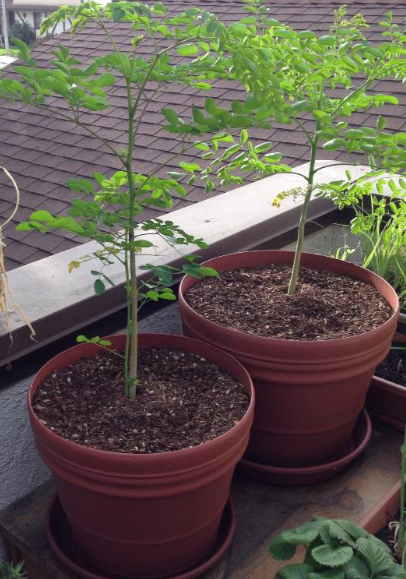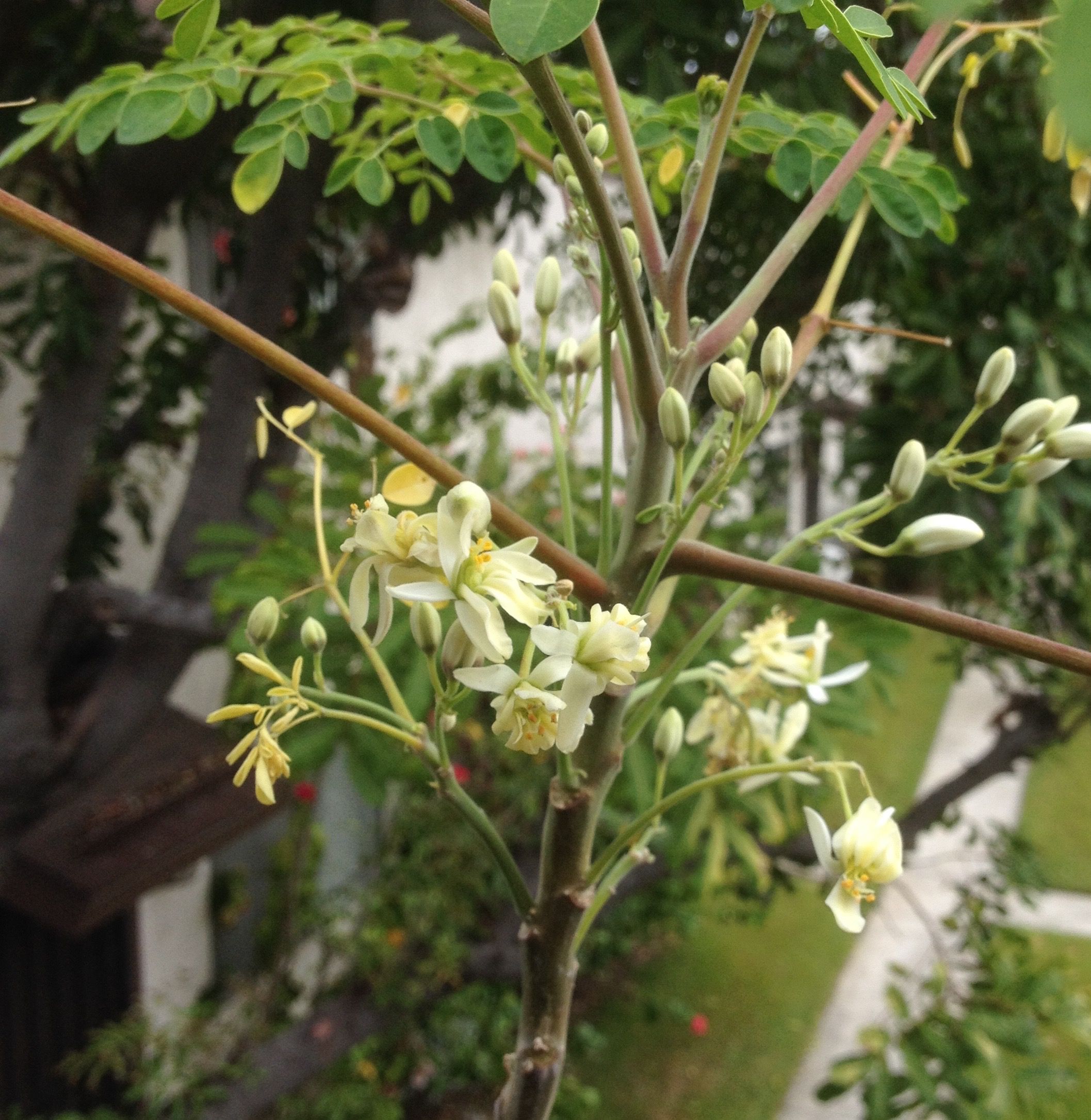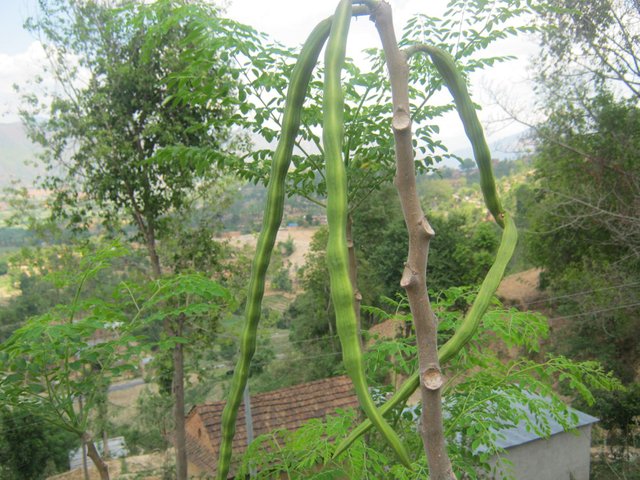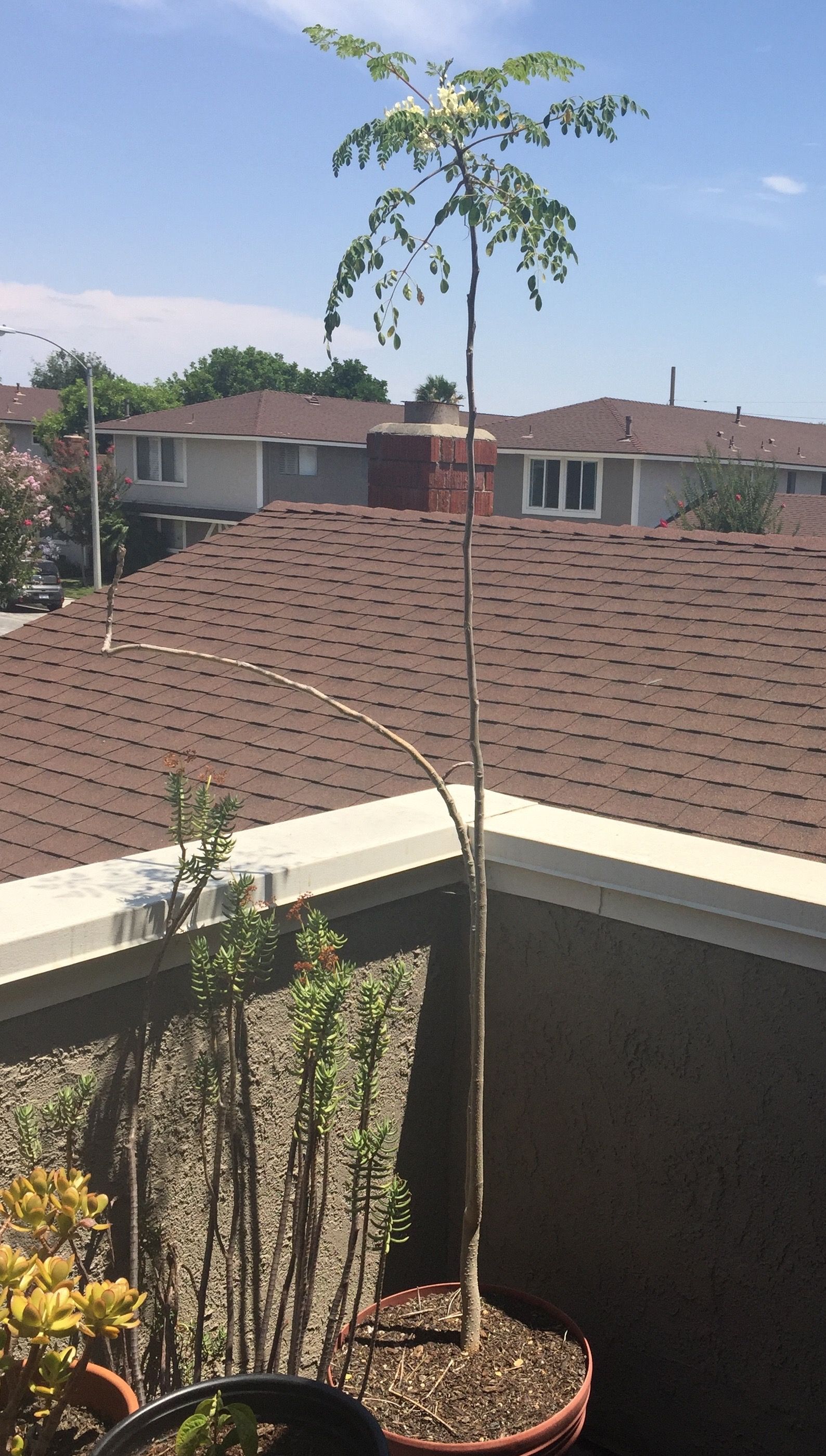Superfood: Moringa, the Tree of Life
Hello Steemians!
The Moringa Tree is called the Tree of Life in many parts of the world. From the research I’ve done it is truly an amazing plant. There is plenty of literature out there that notate the benefits of the plant. You can eat the leaves as salad, eat the flowers, and eat the seed pods. The plant is so amazing and nutrient rich that there are developing nations that use the plant as a food supplement and it can act almost like a prenatal vitamin for pregnant women.

Of the many benefits of the plant, the primary one is the nutrition value. By weight, the Moringa tree has:
-3 times the Vitamin A than you would get from carrots
-3 times the Potassium you would find in bananas
-3.5 times the amount of calcium than what you find in milk
-2 times as much protein than in milk
-7 times the Vitamin C than in oranges
Another benefit of the moringa tree is that you can regrow it really easily. When the tree reaches about 6-7 feet in height you can cut off a 3-foot section and plant it. After a while this section of the tree will sprout roots and grow. You can essentially grow a privacy fence of moringa and have a secure bountiful amount of nutrients provided by your fence.
When I found out about this amazing plant I just needed to grow it for myself. As my tree has gotten older it has become pot bound. The tree is one that has a deep tap root. This helps the tree become drought resistant because it will send it’s root to the water table. Once it is set and adjusted in the ground then you don’t have to water it (unless you don’t get any rain). Moringa is a tree that is grown in warmer regions of the world. If your region gets frequent weather that gets under the low 40’s then you won’t have much success growing the tree.
So, when I first bought the tree it came as a small sapling. The tree and root was about a foot in length. I bought my moringa tree from Armstrong Nursery in California. I believe at the time it was $15 a piece. I bought two because I was very excited about the tree. A little later I’ll explain why it was such a good decision.

After the tree took hold in the pot it began to grow and grow and GROW! This picture was about 2-3 months after the tree was in the pot. I planted the tree in a 15-20 gallon pot. I recommend that pot or bigger if you go the route of growing the tree in a pot.

The next set of pictures show what it looked like at the end of the first year. I was very happy with the growth of the tree. And it had reached about 3 feet in height. Unfortunately, in the winter time we had some colder temperatures and I did lose one of the two trees. Even living in Southern California the trees can be vulnerable to cold temps. One tree remained and continued to grow.

Once the tree reached a height of about 3-1/2 to 4 feet in the second year it flowered. The flowers as I mentioned are also edible. The picture below gives a glimpse of the flowers.

Bees or other pollinators were able to pollinate the flowers and I had a seed pod growing in on my tree. The seed pods can be fairly large. Lucky me I lost my picture of the seed pod on my tree. So, I don’t have a picture of the seed pod. But, the picture below shows what the seed pods look like. They are indeed BIG. A seed pod is like a GINORMOUS snow pea. About 1-2 feet in length.

Image retrieved from: commons.wikimedia.org/wiki/File:Moringa_oleifera_pods_NP.JPG
As the tree has grown it has become pot bound as I’ve mentioned. I haven’t been able to plant it in the ground so the pot has been its residence for about 5-6 years. The side branch that is bent was due to the seed pod that was on the tree.

The one thing I do like is that the flowers and leaves are indeed tasty. You can simply brush your fingers over the leaves and they fall off the branches. Only eat the leaves when they are green. If they turn yellow they have lost the nutrients and the flavor. The flowers have a soft texture to them and add color to a salad. The leaves themselves can be added to salads or in pasta dishes, etc. The leaves have a black pepper taste to them. At least that’s the flavor of the leaves coming from my tree. My tree is not large and does not have a huge amount of leaves. So, it can’t be a salad on its own. But, it does provide some nice flavor to anything being eaten.
I hope that this has been informative. If you live in a warm region of the world I recommend giving it a try. If you are in a cold region, you can grow it indoors. But, you will be limited to small amounts like what I’ve seen from a moringa tree that is pot bound.
As always thank you for reading!
Aside from the referenced photo, all other pictures were taken over the years with my various iPhones I had at the time.
I grew these a few years ago. I loved walking up and eating a had full of leaves. I liked the horseradish like flavor. I never got to try the flowers. The winters In Michigan are cold and I've lost all my trees to frost. time to try again.
They are really good. Folks that I've seen grow them in the colder regions have indoor nurseries. It seems like once the temps get below 45 degrees then all the leaves fall off. So, I could image the first frost in Michigan would have taken it's toll. Thanks for the comment!
Wow! Good to know about these health benefits!
Anytime! It's been a fun experience growing the tree.. my son's will say once and a while.. can I have some leaves to chew on.. thanks for the comment!
I am considering having a tree after reading about all the health benefits but keeping it over winter will be a challenge because of freezing temperatures.